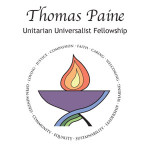Appeals to seek common ground and work toward greater unity in our nation and in our world seem at times just wishful thinking, not just in the realm of politics and government but in religious belief and practice as well. Perhaps the last best hope for common ground and unity in religion may be in what is referred to as interspirituality. Interspirituality, much in keeping with Universalist teaching, embraces all spiritual narratives as one collective human heritage that arises from conscious experience and that leads to abiding compassion for all living things and to faith-inspired commitment to justice and peace on earth. Experiences of such harmonious thought and action are embedded in the mystical strains of all major world religions, and in aboriginal ones as well. As we move from February’s worship theme of “Beloved Community” to March’s theme of “Commitment,” and as we celebrate National Women’s History Month, let’s explore the mystic’s view of the world, predominantly through the eyes of two female mystics: Hildegarde of Bingen (CE 1098-1179) and Julian of Norwich (CE 1343-1416). These enlightened, creative, courageous seers were spiritual forces to be reckoned with in their own time and continue to influence religious thought and practice today.

